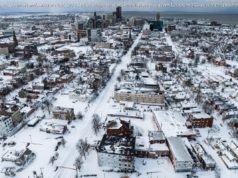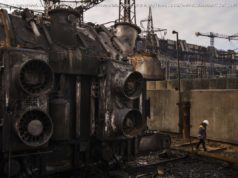Analysts writing for the website 38 North said the disturbances were more numerous and widespread than those observed after previous tests.
Analysts peering at satellite images of North Korea after the latest nuclear test reported Tuesday that they had spotted many landslides and wide disturbances at the country’s test site, in the North’s mountainous wilds. Tunnels for the nuclear blasts are deep inside Mount Mantap, a mile-high peak.
“These disturbances are more numerous and widespread than what we have seen from any of the five tests North Korea previously conducted, ” three experts wrote in an analysis for 38 North, a website run by the U. S.-Korea Institute of the Johns Hopkins University School of Advanced International Studies.
Early readings from global networks that monitor shock waves suggest that the nuclear blast on Sunday had a destructive power equal to 120,000 tons of high explosives. If correct, that is roughly six times more powerful than the North’s test of September 2016, and eight times larger than the bomb dropped on Hiroshima in 1945.
The new satellite images of the Punggye-ri nuclear test site were taken Monday, the day after the nuclear detonation. Planet, a company in San Francisco that owns swarms of tiny satellites, reconnoitered the secretive nuclear test site.
The three analysts — Frank V. Pabian, Joseph S. Bermudez Jr., and Jack Liu — said the wide disturbances appeared to include numerous landslides throughout the rugged site “and beyond.”
They added that they could find no evidence of a surface crater that would have formed if the cavern carved out within the mountain by the blast’s violence and high temperatures had suddenly collapsed.
Shortly after the detonation on Sunday, the global networks detected a smaller shock wave. Some analysts suggested it was caused by a collapse that might have produced a surface crater.






